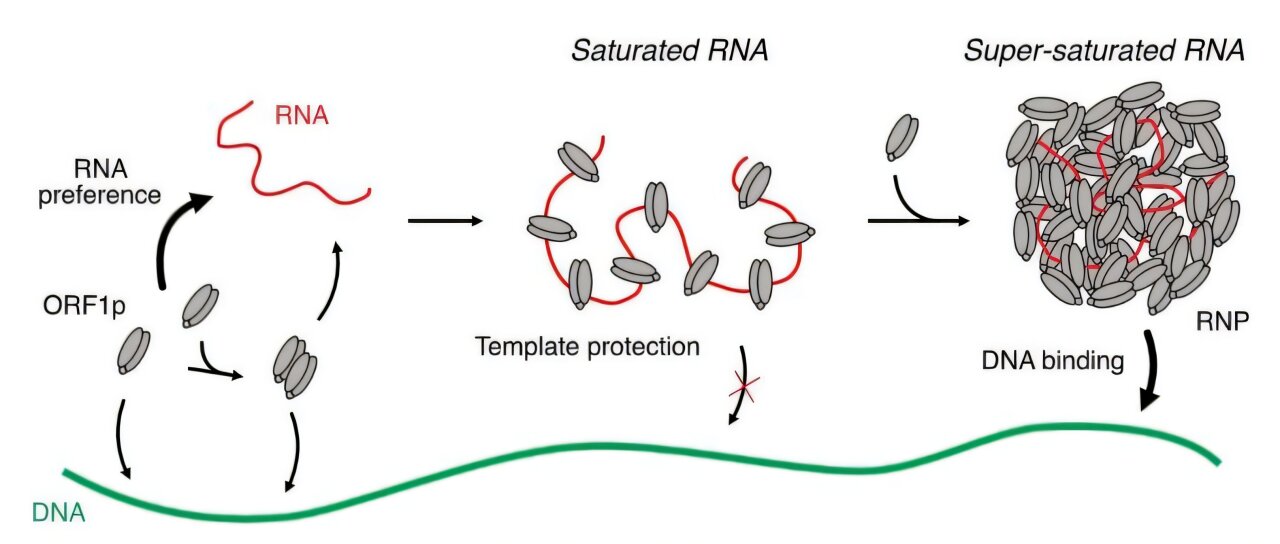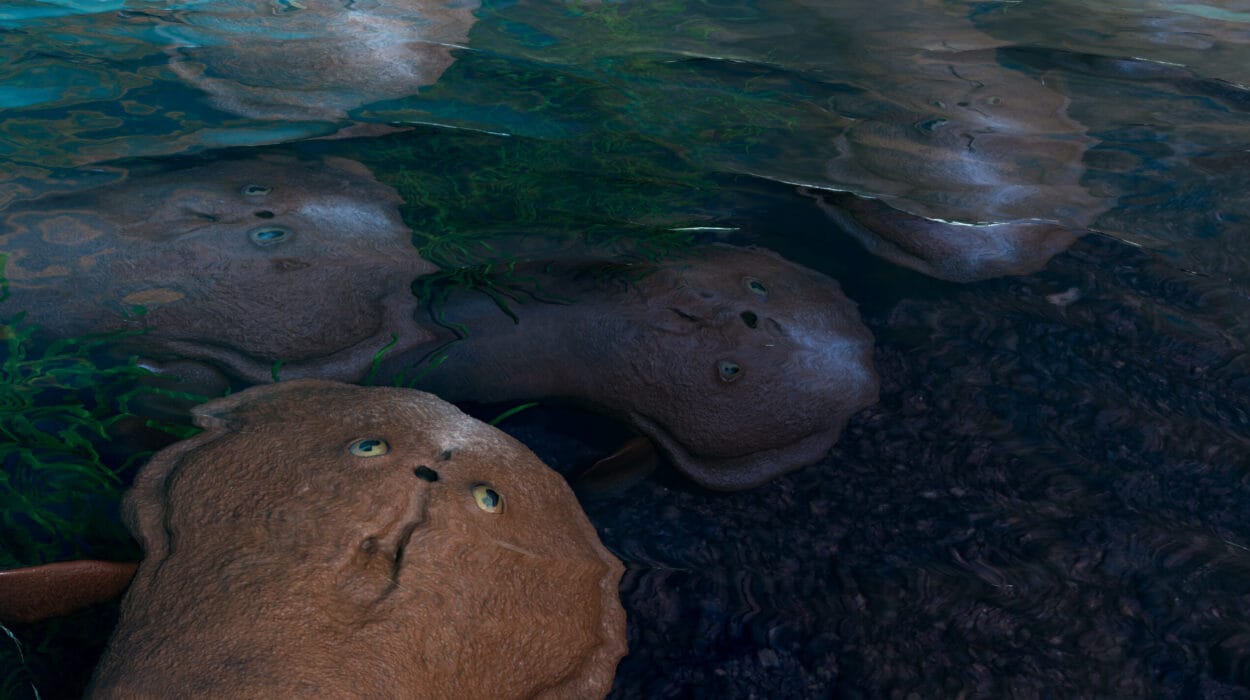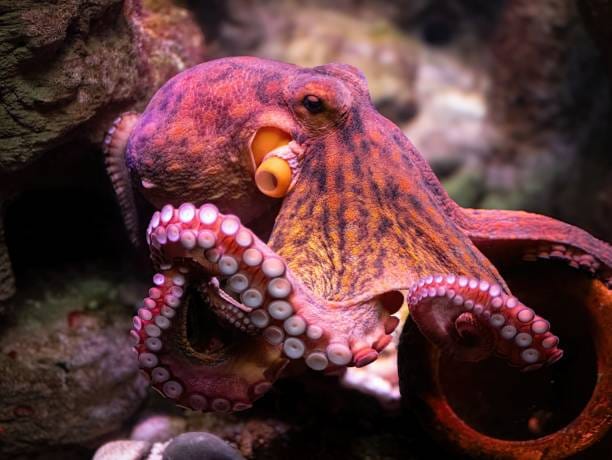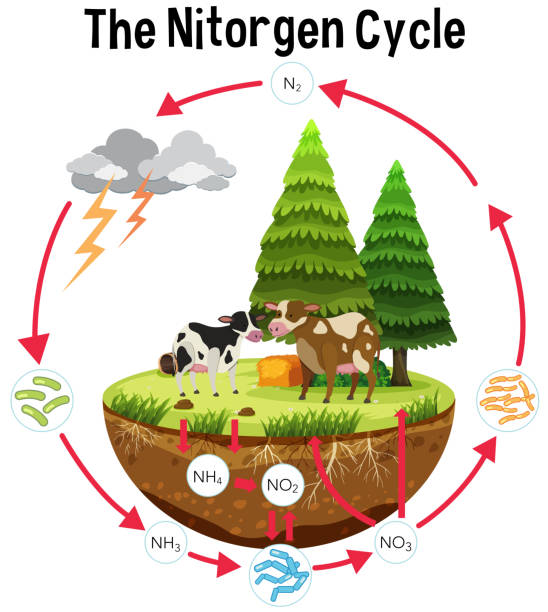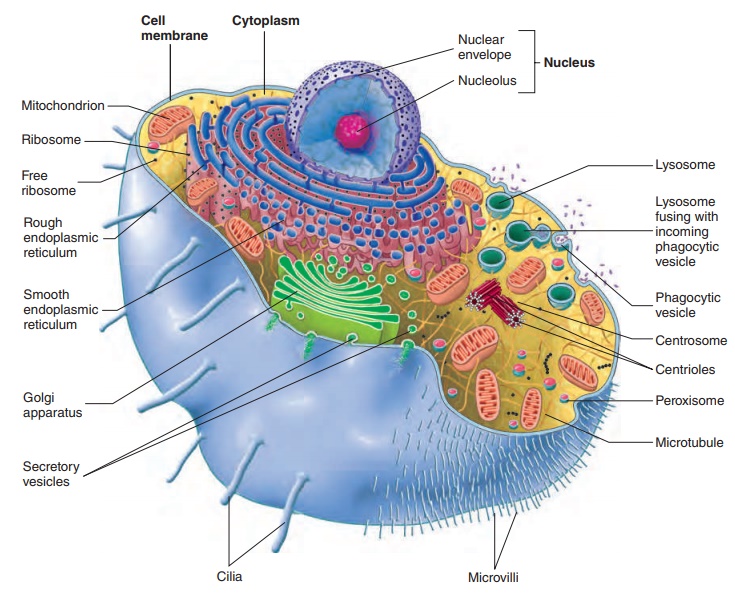Deep within our cells, amid the coiled coils of DNA that make us who we are, lies a hidden record of ancient invasions. These aren’t scars from battles fought with sword or fire—but with molecules. They are molecular fossils, relics of viral onslaughts endured by our ancestors over millions of years. And they’re not just remnants of the past—they’re still jumping, shifting, and reshaping our genetic code today.
Welcome to the strange and dynamic world of transposable elements, the genome’s restless hitchhikers. Chief among them is a genetic stowaway known as LINE-1, a relic of a virus-like past that continues to write itself into our DNA, long after the original virus vanished.
Viral Ghosts in the Genome
Viruses are masters of genetic manipulation. When they infect a cell, they hijack the host’s molecular machinery to replicate themselves. In doing so, they often leave behind pieces of genetic code—a process that, over eons, has littered the human genome with viral fragments. Astonishingly, more than 8% of the human genome is derived from ancient viruses.
But there’s another class of intruders that take this a step further. Simpler even than viruses, these transposable elements—or “jumping genes”—can move around the genome by copying and pasting themselves into new locations. Though most of these elements have long been silenced by the genome’s protective defenses, one, long interspersed nuclear element-1 (LINE-1), remains active.
It’s not just alive—it’s plotting its next move.
LINE-1: The Retrotransposon That Wouldn’t Die
LINE-1 isn’t a virus, but it behaves like one. Classified as a retrotransposon, it mimics the replication strategy of retroviruses like HIV. First, LINE-1 is transcribed into RNA—a molecular cousin of DNA. Then, this RNA is reverse-transcribed back into DNA and inserted into a new location in the genome. Every jump creates a new copy.
This genomic hopscotch has been playing out for millions of years. Today, the human genome harbors over 500,000 LINE-1 sequences, making up an astonishing 20% of our DNA. That’s more than the DNA devoted to genes coding for all our proteins combined.
Most of these LINE-1 copies are broken, incomplete, or silenced. But a few retain their full functionality—and one, in particular, remains uniquely capable of jumping on its own.
A Double-Edged Sword
The evolutionary legacy of LINE-1 is complex. On one hand, these elements have helped shape the genome. They’ve contributed to genetic innovation, altered gene regulation, and even assisted in creating entirely new genes. In fact, some scientists suggest that our cognitive complexity may owe a small debt to ancient waves of transposition.
But LINE-1 is not always benign. When it jumps into or near essential genes, it can disrupt their function or trigger mutations. This can lead to neurological diseases, cancer, and premature aging. The movement of LINE-1 has been associated with Lou Gehrig’s disease (ALS), schizophrenia, and certain types of leukemia.
Worse still, when the immune system mistakes LINE-1 activity for a viral infection, it can launch a misguided inflammatory response—essentially waging war on the body itself.
The Fortress of the Nucleus
LINE-1’s mobility poses a key challenge: how does it get into the nucleus of a cell, where the DNA resides?
The nucleus isn’t easy to penetrate. Protected by a double membrane known as the nuclear envelope, it forms a secure vault for the genetic code. Large complexes like LINE-1 RNA and its accompanying proteins aren’t typically allowed inside. Most of the time, the nucleus is a fortress—and LINE-1 is an uninvited guest.
However, cells are dynamic. They divide, and during this process—called mitosis—the nuclear envelope temporarily dissolves. For a brief window, the walls come down. It’s at these rare moments that LINE-1 makes its move.
Cracking the Genetic Vault
A new study published in Science Advances has illuminated this process with unprecedented clarity. The international team, led by researchers at NYU Langone Health and Ludwig-Maximilians-Universität (LMU) München, has discovered how LINE-1 gains entry to the genome’s inner sanctum.
The key lies in LINE-1’s self-made protein ORF1p. This protein is multifunctional: it can bind to RNA, bind to DNA, and most importantly, bind to itself. This last property allows ORF1p to form multimers—essentially clumps of repeating protein units. When these multimers gather in high enough concentrations, they form condensates—dense molecular assemblies that act like Trojan horses.
The researchers found that LINE-1 RNA associates with ORF1p to form these condensates during cell division, precisely when the nuclear envelope breaks apart. The condensates then bind to DNA, securing LINE-1’s position before the nucleus seals again. It’s a strategy that exploits the cell’s own division machinery—a clever molecular heist.
Condensates: Molecular Command Centers
Condensates are a relatively new frontier in molecular biology. These structures, often called biomolecular condensates, are thought to compartmentalize reactions within cells without needing a membrane. They’re like pop-up labs that appear, perform a task, and disappear.
In the case of LINE-1, the condensate becomes a delivery vehicle, bringing LINE-1 RNA into close contact with the genomic DNA. Interestingly, the team found that LINE-1 prefers regions of the genome rich in adenine (A) and thymine (T) bases—an insight that may help predict where future insertions will occur.
But the real breakthrough was understanding the trigger for DNA binding. The researchers discovered that ORF1p only gains this binding capability when the ratio of ORF1p molecules to LINE-1 RNA in the condensate reaches a specific threshold. Below this ratio, the condensate forms—but it doesn’t bind DNA. Only when the ORF1p is sufficiently concentrated does the entire cluster lock onto the genome.
This subtle shift in stoichiometry—just a matter of molecular math—may be the gatekeeper to LINE-1’s transpositional activity.
Implications for Health and Medicine
This discovery opens new avenues for therapy. If scientists can block the formation of LINE-1 condensates, or prevent ORF1p from reaching the critical concentration needed for DNA binding, they might shut down LINE-1 mobility altogether. This could be a powerful tool in the fight against age-related inflammation, cancers, and certain neurological disorders.
Moreover, the work suggests a broader principle: other proteins and RNAs in the cell may also form condensates whose function changes based on component ratios. This could represent a general mechanism of cellular regulation, with far-reaching implications beyond LINE-1.
As Dr. Liam Holt, one of the study’s lead authors, puts it: “Our study provides crucial insight into how a genetic element that has come to make up a large part of human DNA can successfully invade the nucleus to copy itself. These findings lay the foundation for future therapies to prevent LINE-1 replication.”
Jumping Genes and Evolution’s Engine
There’s a poetic irony in all of this. What began as a molecular parasite—an ancient genetic interloper—has become an integral part of the human story. LINE-1 and its viral cousins have shaped our evolution, sculpted our genomes, and continue to influence our biology.
They remind us that the genome is not a static code, but a living manuscript—edited by the past, rewritten by the present, and still in flux. Every jump, every insertion, every rogue replication is a sentence in a narrative billions of years long.
A New Frontier in Genetic Science
As scientists probe deeper into the mechanics of LINE-1, they are uncovering not just the secrets of a single element, but the broader language of genome regulation, cellular defense, and evolutionary innovation. Understanding how LINE-1 operates offers a window into the molecular strategies that viruses and virus-like elements use to persist, adapt, and evolve.
It also reveals how our cells fight back—silencing most transposable elements, fencing off harmful mutations, and evolving elaborate mechanisms to preserve the integrity of the genome. It’s a molecular arms race, and the battlefield is our DNA.
Conclusion: The Echoes Within Us
In the end, LINE-1 is more than just a curiosity. It’s a testament to nature’s ingenuity—a tiny replicator that has endured extinction, evaded defenses, and embedded itself into the very structure of life. Its story is a microcosm of evolution itself: a tale of persistence, adaptation, and transformation.
We carry its code in every cell, not just as a passenger, but as a force that continues to shape us. The more we learn about LINE-1, the more we realize that we are not just shaped by our genes—we are shaped by the ghosts that linger within them.
And those ghosts, it seems, are still whispering.
Reference: Sarah Zernia et al, LINE-1 ribonucleoprotein condensates bind DNA to enable nuclear entry during mitosis, Science Advances (2025). DOI: 10.1126/sciadv.adt9318. www.science.org/doi/10.1126/sciadv.adt9318
